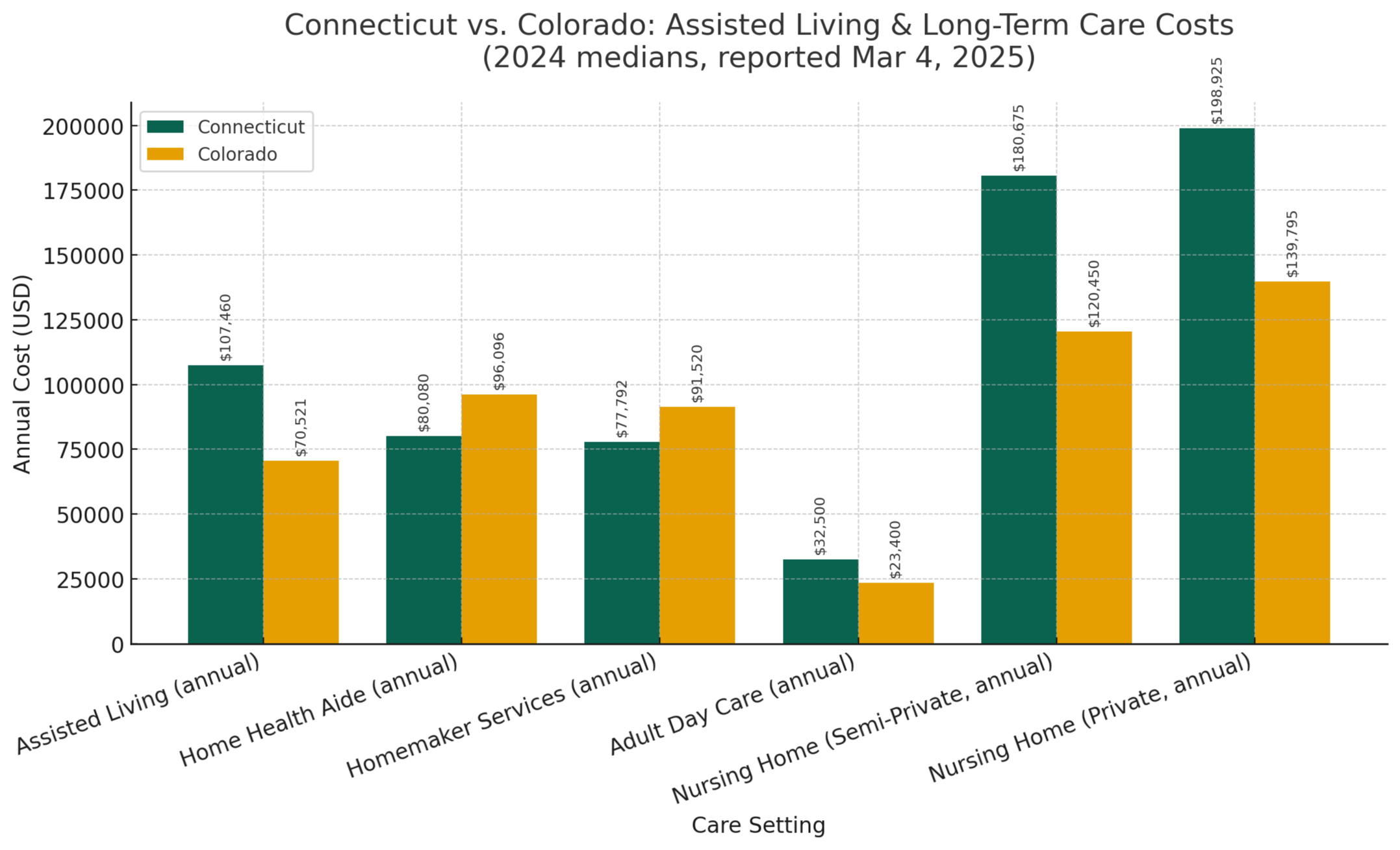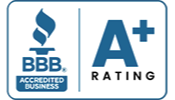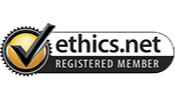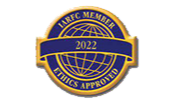Every September, National Assisted Living Week (NALW) shines a spotlight on the people, places, and policies that support older adults as they age with dignity. It’s also the perfect reminder to assess how assisted living and long-term care (LTC) fit into your retirement plan. Whether you’re planning for yourself, a spouse, or a parent, the most expensive “line item” in retirement is often the one families don’t talk about until it’s urgent: care.
This guide from Agemy Financial Strategies breaks down what assisted living really costs, how it differs from other levels of care, and the practical, tax-efficient strategies you can use to prepare, without sacrificing your lifestyle or legacy.
Why National Assisted Living Week Matters for Your Finances

NALW celebrates the individuals who live and work in assisted living communities and raises awareness about care choices. For your finances, it’s a nudge to ask:
- If care were needed tomorrow, where would it happen: at home, in assisted living, or in a memory care setting?
- Who would coordinate it, and how would we pay for it?
- Do we understand what Medicare covers (and doesn’t) for long-term care?
- Are our legal documents aligned with our care wishes and financial plans?
Answering these now, before a health event forces the issue, can help protect your retirement income, reduce family stress, and retain control over your choices.
Assisted Living 101: What It Is (and Isn’t)
Assisted living communities help with activities of daily living (ADLs) – things like bathing, dressing, mobility, and medication management – while promoting independence and social engagement. They are not the same as:
- Independent living: Social amenities with minimal support; typically no ADL assistance.
- Skilled nursing (nursing homes): 24/7 medical monitoring and rehabilitative services for complex conditions.
- Memory care: Specialized environments for individuals with dementia or Alzheimer’s, often within assisted living campuses but at a higher cost.
Key takeaway: Assisted living sits in the middle of the care continuum, more supportive than independent living, less clinical (and often less expensive) than skilled nursing.
The True Cost of Care: What to Expect
While pricing varies widely by region, care level, and amenities, it helps to think in layers:
- Base monthly rate for housing, meals, housekeeping, and basic supervision.
- Care tiers or à la carte fees for ADL assistance (e.g., medication management, bathing, mobility).
- Specialized services such as memory care, on-site therapy, or transportation.
- One-time community fees upon move-in.
Even modest assumptions add up quickly. Over a 3–5 year stay, total costs can easily reach six figures, and memory care can be significantly higher. At home, costs may be similarly large once you factor in caregiver hours, home modifications, and respite support. The bottom line: planning for multiple care scenarios is essential.

What Medicare, Medicaid, and Insurance Actually Cover
This is one of the most misunderstood areas in retirement planning:
- Medicare: Covers acute and rehabilitative care (e.g., hospital stays, short-term rehab) but does not pay for extended custodial care (help with ADLs), whether at home or in assisted living. Some Medicare Advantage plans may offer limited supplemental services, but they’re not a comprehensive LTC solution.
- Medicaid: Can cover long-term custodial care only for those who meet strict income and asset limits, and rules vary by state. There may be waiting lists or limitations for home- and community-based services. Relying on Medicaid often means less choice and control.
- Health Insurance: Traditional health insurance doesn’t cover ongoing custodial care.
- Long-Term Care Insurance (LTCI): Pays benefits for qualifying care (home care, assisted living, memory care, nursing home) after meeting benefit triggers. Policies differ widely by daily benefit, benefit period, elimination period, and inflation riders.
Takeaway: Most long-term care costs are private-pay unless you’ve planned with LTC insurance or qualify for Medicaid. Your retirement plan should assume you’ll shoulder a significant portion of these costs, and then build strategies to handle them efficiently.
Five Financial Questions to Answer During NALW
- How much care could we afford today without altering our lifestyle?: Map your current income streams (Social Security, pensions, portfolio withdrawals) against likely care costs.”
- If a spouse needs care, what’s the impact on the other spouse’s lifestyle and longevity risk?: A single care event can dramatically change the surviving spouse’s budget and portfolio risk.
- Which assets should fund care first: taxable, tax-deferred, or tax-free?: Tax-smart withdrawal sequencing can add years of sustainability to a plan.
- Do we prefer to receive care at home as long as possible?: If yes, budget for home modifications and in-home care hours, plus respite support for family caregivers.
- Do we want to insure the risk, self-fund, or blend both?: Your answer drives insurance design, annuity or life insurance riders, and cash reserve targets.
Core Strategies to Cover LTC Costs
1) Traditional Long-Term Care Insurance
- What it does: Provides a dedicated pool of money for qualifying care across settings.
- Pros: Leverages premium dollars into larger benefits; helps protect assets and lifestyle; preserves choice.
- Cons: Premiums can rise; “use-it-or-lose-it” risk if you never claim.
- Design tips: Consider inflation protection (especially if you’re under 70), a 90-day elimination period to help reduce premiums, and coordination with family caregiving plans.
2) Hybrid Life + LTC Policies
- What they are: Permanent life insurance with an LTC rider or linked-benefit products.
- Pros: If you don’t need care, your heirs receive a death benefit; some offer return-of-premium features.
- Cons: Higher upfront costs; benefits vary by carrier.
- Good fit for: Individuals who value legacy plus LTC optionality, and may be repositioning low-yield assets.
3) Annuities with LTC Riders
- How they work: Deferred or immediate annuities that boost income if you meet LTC triggers.
- Pros: Can turn a portion of assets into guaranteed income, with enhanced payments during care needs.
- Cons: Rider costs and carrier rules vary; benefits are typically tied to annuity value and age.
- Use case: Complement to Social Security and pensions to create a floor of income that scales during LTC events.
4) Health Savings Accounts (HSAs)
- Triple tax advantage: Tax-deductible contributions, tax-free growth, and tax-free withdrawals for qualified expenses, including many LTC costs and some long-term care insurance premiums (subject to IRS limits).
- Strategy: Maximize contributions during working years, invest for growth, and earmark the HSA as a dedicated LTC bucket.
5) Purpose-Built LTC Reserve (Self-Funding)
- Approach: Dedicate a conservative, liquid pool (e.g., short-duration bonds, high-quality CDs, T-Bills) for the first 12–24 months of care costs.
- Why it works: Buys time to make thoughtful decisions, potentially reducing the cost of rushed placements, and may bridge LTC insurance elimination periods.
6) Housing & Real Estate Planning
- Options: Downsize proactively, use home equity carefully (e.g., HECM line of credit used judiciously), or convert a second property into liquidity.
- Caution: Coordinate real estate moves with the broader tax and benefits plan; evaluate the impact on state aid eligibility if Medicaid is a long-range fallback.
Tax-Smart Planning Moves
- Withdrawal sequencing: In many cases, spend from taxable accounts first (harvesting gains strategically) while letting tax-deferred and Roth assets grow; adjust as brackets change due to care deductions.
- Medical expense deductions: Qualifying LTC costs can be itemized deductions when they exceed AGI thresholds; keep detailed documentation.
- Policy premiums: Some LTC insurance premiums are tax-deductible within IRS age-based limits; benefits are generally tax-free when used for qualified care.
- Roth conversions (pre-care): Converting in lower-income years before RMDs start can lower lifetime taxes and create tax-free flexibility if care is needed later.
- Qualified charitable distributions (QCDs): For those 70½+, QCDs can satisfy part or all of RMDs without boosting AGI, useful when care costs are looming and you want to control brackets.
Protecting the Healthy Spouse
When one spouse needs care, the risk is not just the bill; it’s the ripple effect on the healthy spouse’s lifetime plan.
- Segment income streams: Carve out guaranteed income (pensions, Social Security, annuity income) to meet the healthy spouse’s baseline needs.
- Title and beneficiary review: Align accounts and property titles to help ensure continuity of access and avoid probate delays.
- Update estate documents: Durable powers of attorney (financial and healthcare), updated wills, trusts where appropriate, and HIPAA releases are essential.
- Claim timing: With LTC insurance, weigh the benefit trigger timing carefully to help maximize total value; don’t delay claims unnecessarily.
Care at Home vs. Assisted Living: Building a Flexible Plan

Most retirees prefer to age in place as long as possible. A practical plan includes:
- Home modifications: Grab bars, zero-threshold showers, improved lighting, ramps, and fall-prevention layouts.
- Technology: Medication dispensers, emergency response devices, remote monitoring, and telehealth.
- Care coordination: A care manager (geriatric care manager) can help optimize services and avoid unnecessary hospital visits.
- Respite and backup: Budget for respite hours to help protect family caregivers from burnout; identify short-term stay options in assisted living if needed.
- Transition plan: If home care becomes unsafe or isolating, have a shortlist of assisted living communities with pricing, waitlists, and quality indicators.
Quality & Culture: How to Vet Assisted Living Communities
Beyond the numbers, lifestyle fit matters. During tours, evaluate:
- Care philosophy: How are care plans developed and updated? What’s staffing like on nights and weekends?
- Clinical partners: On-site nursing? Visiting physicians or therapy providers?
- Engagement: Daily activities, transportation, spiritual and cultural programming.
- Dining: Nutrition options and flexibility for special diets.
- Security & memory care: Wandering protocols, secure courtyards, specialized staff training.
- Contracts & pricing: How are care level increases priced? What’s included vs. add-on?
Capture the details in a comparison worksheet and revisit annually, as needs evolve.
Common Myths, Debunked
“Medicare will pay for long-term care.”
It won’t cover extended custodial care.
“We’ll just sell the house if we need to.”
Housing markets are cyclical; urgent sales can be costly and stressful.
“Insurance is too expensive.”
Partial coverage, shared-care riders, or hybrid solutions can fit many budgets and dramatically reduce risk.
“We’ll cross that bridge when we get there.”
Crisis decisions often lead to higher costs and fewer choices. Planning early preserves control.
A Sample Framework: Funding an Assisted Living Scenario
(This material is for educational purposes only and does not constitute individualized financial, legal, or tax advice.)
Couple, early 70s, with $1.4M in investable assets, Social Security benefits, and a paid-off home.
- Establish a care reserve: $120,000 in laddered Treasuries to cover roughly 12 months of assisted living or home care.
- Hybrid policy: Allocate $200,000 to a linked-benefit life/LTC policy providing a pool of ~$400,000 for qualifying care events; shared care so either spouse can use remaining benefits.
- Annuity income floor: Shift $250,000 to a deferred income annuity starting at age 78 to hedge longevity and sequence-of-returns risk; add an LTC rider that boosts income during a qualifying event.
- HSA strategy: Use existing HSA for qualified care expenses and eligible LTC premiums (within IRS limits).
- Tax plan: Perform Roth conversions over 3–5 years to reduce future RMDs, keeping conversions within targeted tax brackets; use QCDs post-70½ to control AGI.
- Estate docs & titling: Update POAs, healthcare proxies, beneficiary designations, and consider a revocable trust for smoother asset management if incapacity arises.
Result: A blended solution that keeps choices open, cushions the portfolio during a care event, and helps protect the healthy spouse’s lifestyle.
Your NALW Action Checklist
- Review income sources and monthly essential expenses.
- Price two to three local assisted living options and at-home care estimates.
- Inventory policies (LTCi, life with LTC rider, annuities) and confirm benefit triggers.
- Set up or revisit a care reserve bucket and evaluate inflation risk.
- Max out HSA contributions if eligible; earmark for future care.
- Coordinate with an advisor on withdrawal sequencing, Roth conversions, and QCDs.
- Update legal documents and care directives; share locations and logins with a trusted contact.
- Discuss roles with adult children or designated decision-makers.
- Schedule an annual “Care Plan Review” each September during National Assisted Living Week.
How Agemy Financial Strategies Can Help

Planning for assisted living and long-term care is as much about control and dignity as it is about dollars and cents. At Agemy Financial Strategies, our family of fiduciaries help you:
- Model realistic care cost scenarios and stress-test your retirement plan.
- Compare insurance vs. self-funding and design blended solutions that fit your goals.
- Build tax-efficient withdrawal strategies and coordinate with your CPA and attorney.
- Protect the healthy spouse’s lifestyle and preserve your legacy intentions.
- Create a clear, written Care Funding Plan you can share with family so everyone knows the “what, where, and how” if care is needed.
Final Word
National Assisted Living Week is a celebration of community and compassion, and an ideal reminder to bring clarity to one of the biggest variables in retirement: the cost of care. With a thoughtful, tax-aware plan and the right mix of solutions, you can transform a major financial risk into a manageable, predictable part of your retirement strategy.
Ready to align your retirement plan with a real-world care strategy?
Schedule a consultation with Agemy Financial Strategies to build your personalized Long-Term Care Funding Plan and move forward with confidence.
Disclaimer: This material is for educational purposes only and does not constitute individualized financial, legal, or tax advice. Consult your professional advisors about your specific situation and state-specific rules.











